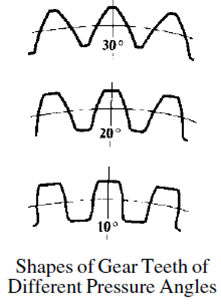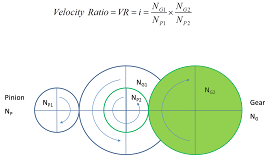1.Roda gigi lurus (Spur Gear)
•Teeth
are parallel to the axis of the gear
•Advantages
–Cost is cheapest
–Ease of manufacture
–Availability in standart parts
•Disadvantages
–Only works with mating gear
–Axis of each gear must be parallel
2.Roda gigi miring (Helical Gear)
•Teeth
are at an angle to the gear axis (usually 10° to 45°) – called helix angle
•Advantages
–Smooth and quite due to gradual tooth
engagements
–More tooth surface engagement allows for greater
power transmission for given gear size.
–Parallel to perpendicular shaft
arrangement
•Mating gear axis can be parallel or
crossed
•Can withstand the largest capacity at
30,000 hp
•Disadvantage
–More expensive
–Resulting axial thrust component
3.Roda gigi payung/kerucut (Bevel Gear)
•Teeth
at helix angle
•Very
Strong
•Used
in rear end applications
•Gear
axis at 90°, based on rolling cones
•Advantages
–Right angle drives
•Disadvantages
–Get axial loading which complicates
bearings and housings
4.Roda gigi cacing (Worm Gear)
•Gears that are 90° to each other
•Advantages
–Quiet / smooth drive
–Can transmit torque at right angles
–No back driving
–Good for positioning systems
•Disadvantage
–Most inefficient due to excessive
friction (sliding)
–Needs maintenance
–Slower speed applications
Gear Manufacturing :
Module system of gear
The
module is the ratio of the pitch diameter to the number of teeth. The unit of
the module
is milli-metres.Below is a
diagram showing the relative size of teeth machined in a rack with
module
ranging from module values of 0,5 mm to 6 mm
CATATAN :
1.Module
distandarisasi
(ada
tabel
standar
module)
2.Dua
roda
gigi
yang bekerjasama
harus
mempunyai
modul
yang sama
3.Jumlah
gigi
(z) harus
merupakan
bilangan
bulat










No comments:
Post a Comment